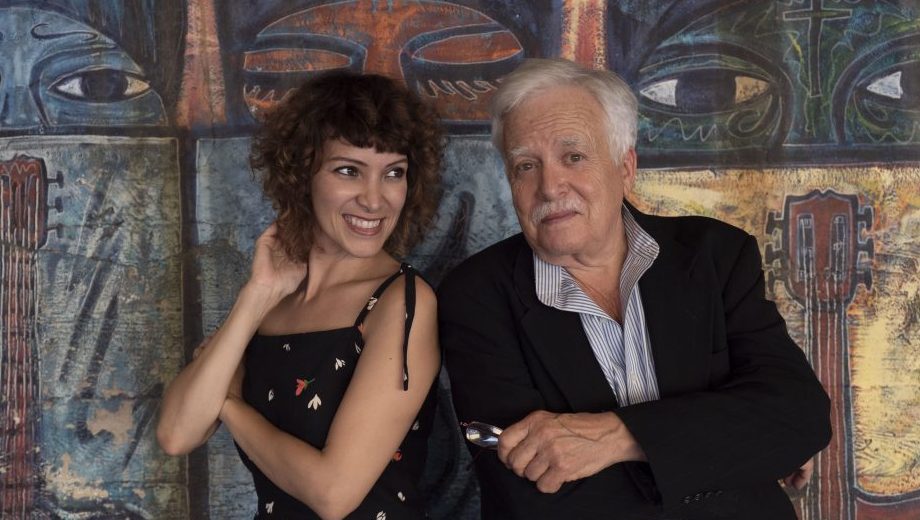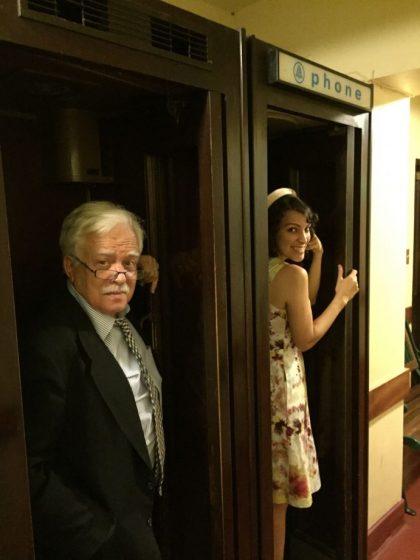As a Detroit instrumental duo comprised of a session drummer and folksinger, making instrumental music as the Moonrisers has poured out slow and low.
We love exploring the dark and meditative side of folk music and instrumental recordings from around the world, and love to hear how textures talk to each other within them. Here are some of our favorite songs and inspirations in the realm of instrumental doom folk.
“Tuzna Je Nedelja” – Branko Mataja
A devastating melody made familiar by Billie Holliday’s recording of “Gloomy Sunday.” Branko Mataja was a guitar player and maker from Yugoslavia who survived an Axis invasion and a forced labor camp during WWII. His haunting self-recorded instrumental arrangements of traditional Serbian and Slavic folk songs have thankfully emerged in recent years, with Numero Group releasing two of his albums.
“Company Leaves” – Kinloch Nelson
Kinloch Nelson’s recordings of solo fingerstyle guitar–particularly this cozy, warbled album of demos from the late sixties–feel like a warm, slow autumn day. I love his pace, and the deep open tunings he frequents. There is a real sense of wholeness in his music that I love.
“Memory, Memory, Memory” – Six Organs of Admittance
This song comes from an album full of dark, woody, and meditative instrumentals in tribute to the poet Octavio Paz. I love the low hounding of the bottom guitar string on this song. It sounds so loose that it could fall off if plucked too hard.
“Paper Route” – Calexico
Calexico has a beautiful sense of space and arrangement on this recording. The vibraphone is an interesting part of the foreground, and their analog recordings are totally timeless.
“Caribea” – Moondog
I love how simple, yet complex this arrangement is. The lively hand drums and maracas are signature to the sound of Moondog. Listening to Moondog frees and ignites the joy of drumming.
“Czardas” – Rita Villa
This early-1900s wax cylinder recording of solo harpist Rita Villa from Mexico is totally magical. The song takes so many melodic twists and turns, while each note seems to stand out as an independent entity.
“Knife Chase” – Tom Waits
Love the heavy, low-fundamental stomp percussion against saturated horns and guitar. The lines are totally unpredictable, yet bind together like an unhinged orchestra. The shared admiration of Tom’s music is what brought the two of us together in the first place, and continues to provide us both with so much inspiration and excitement that never runs out.
“Everywhen We Go” – Mike Baggetta, Jim Keltner, Mike Watt
Open-tuned drums played by the legendary Jim Keltner take the floor with a feeling in this spaghetti western-sounding tune. There’s a lot of flexibility between what each instrument is putting down. Jim Keltner’s thumbprint is on so many iconic records, and it’s neat to hear him recorded in a very loose improv context.
“Barakaat” – Abdullah Ibrahim
As with all of Abdullah’s tracks, I love the sparseness and conversations between simple drum and bass lines.
The strings in this add a lot of drama.
“Fruta Prohibida” – Mitchell Froom
This incredible arrangement of classical instrumentation through the lens of Tchad Blake’s dark, emotional production is always a favorite. This record, “Dopamine” is sinister and gorgeous.
“Evensong” – Fripp & Eno
This looped electric beauty came from the 1975 ambient album, Evening Star by Robert Fripp and Brian Eno. Bright and echo-laden guitar notes aren’t often bundled together this densely, and here it creates something odd and captivating. I picture young seedlings emerging from the ground when I hear this song.
“Circle of the Seasons” – Moonrisers
This is the first track of our debut album Harsh & Exciting produced by Dan Auerbach. We recorded this in a house from 1908.
“Paris, Texas” – Ry Cooder
This song is desolate. Every bit of ambience is as important as the slide lead in this song. You are immediately transported to the desert on an empty highway. I became obsessed with this theme song before ever watching the film for which it was written.
“Don’t Blame Me” – Marc Ribot
Marc’s touch is unlike anything I’ve ever heard. It sounds antique- metallic in texture. His chord choices make you feel like you’re immersed in a Duke Ellington recording, while it’s all skin and bones and lonesome plunks. I love how different this arrangement is from the Everly Brothers’. There’s barely any sustain anywhere, and it’s a live wire of emotion as he multitasks up and down the fretboard.
“Joe Kirby Blues” – John Fahey
This track has a tone that’s really pensive. Reverent of the blues form of earlier American guitar greats, there’s a departure in the melodies here that are chilly and ruminative. It’s part of the psychedelic folk-blues masterpiece album “Days Have Gone By”. John Fahey’s renderings of traditional folk and blues songs break all kinds of “rules” in the guitar world, and hence has opened up a huge door in my perception of folksong.
Photo Credit: Jim Herrington


